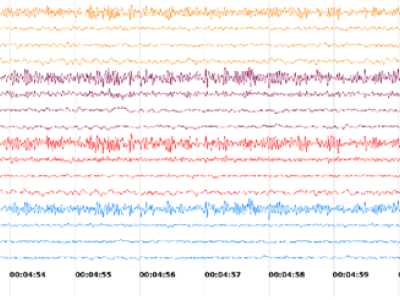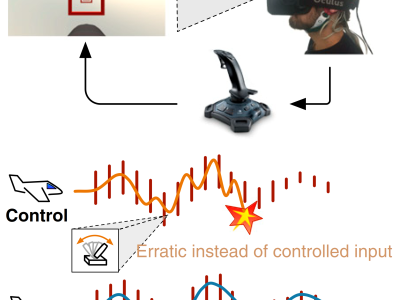Dataset: Modulation of Neural Activity during Guided Viewing of Visual Art

- Citation Author(s):
-
Jesús Tamez-DuqueMayra De-AlbaGuillermo Herrera-ArcosFernanda Zapata-MurrietaJosé L Contreras-VidalRogelio Soto
- Submitted by:
- Fernanda Zapata-Murrieta
- Last updated:
- DOI:
- 10.21227/860v-k921
- Data Format:
- Links:
 476 views
476 views
- Categories:
- Keywords:
Abstract
Mobile Brain-Body Imaging (MoBI) technology was deployed at the Museo de Arte Contemporáneo (MARCO) in Monterrey, México, in an effort to collect Electroencefalographic (EEG) data from large numbers (N = ~1200) of participants and allow the study of the brain’s response to artistic stimuli, as part of the studies developed by University of Houston (TX, USA) and Tecnológico de Monterrey (MTY, México).
In this dataset, we include EEG recordings corresponding to brain activity of 25 subjects (ages 18-30) as they walked through one of the exhibits (artist: Otto Dix) included in this data-collection protocol. Recordings include a baseline (BL) control condition devoid of artistic stimuli and 8 states of viewing art, which correspond to the same art pieces in the same order, for every subject, and which have a duration of 2 minutes, in average.
Approximately half of the participants included in this dataset were provided with an explanation of each art piece (Guided-E), while the others were given no explanation (Guided-NE) as their activity was recorded. Subjects and corresponding data were labeled, accordingly.
The study was performed using portable Muse (InteraXon, Inc, Toronto, ON, Canada) headbands with four dry electrodes located at AF7, AF8, TP9, and TP10.
These data were selected for distribution as they have already been used for publication: Herrera-Arcos, Tamez-Duque, et al. Nov 2017, Front. Hum. Neurosci. doi: 10.3389/fnhum.2017.00581.
Instructions:
Data was originally recorded in native .muse format and later converted to .mat using the MuseLab Toolkit. Each .mat file included in this dataset corresponds to a data-collection session (BL and viewing of 8 Art Pieces) recorded for one subject. Files include raw data before filtering or cleaning. Filenames include an E / NE label, which correspond to Guided-E / Guided-NE variables. In order to access and work with this dataset, MatLab software (MathWorks, Natick, MA 01760, United States) is required. For specific information on how the set was pre-processed for artifact removal and for analysis in frequency domain, the reader may refer to Herrera-Arcos, Tamez-Duque, et al. Nov 2017, Front. Hum. Neurosci. doi: 10.3389/ fnhum.2017.00581. Should the reader desire or require additional information for the usage of this database, he should contact the corresponding author: Jesús Tamez-Duque (jtamez.indi@gmail.com).
Acknowledgement note:
Financial support for this data-collection protocol was provided by Tecnológico de Monterrey, Tec Salud, and the National Robotics Lab – CONACyT. Additionally, support from MARCO’s staff (Alexandra Zambrano, Indira Sánchez Tapia, Elisa Téllez, Martha Morales, Jaime Rosales, Jennifer Furukawa, Tania Martínez, and many others) was critical for the large-scale collection from which these data were selected. This work was inspired by research under NSF award #BCS 1533691: NCS-FO: Assaying Neural Individuality and Variation in Freely Behaving People Based on qEEG.








